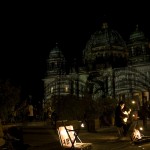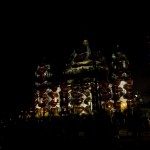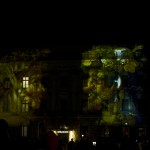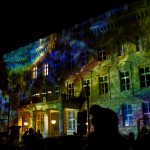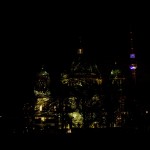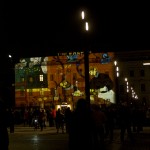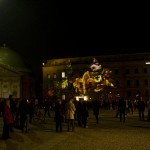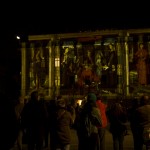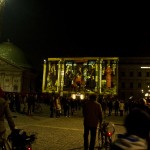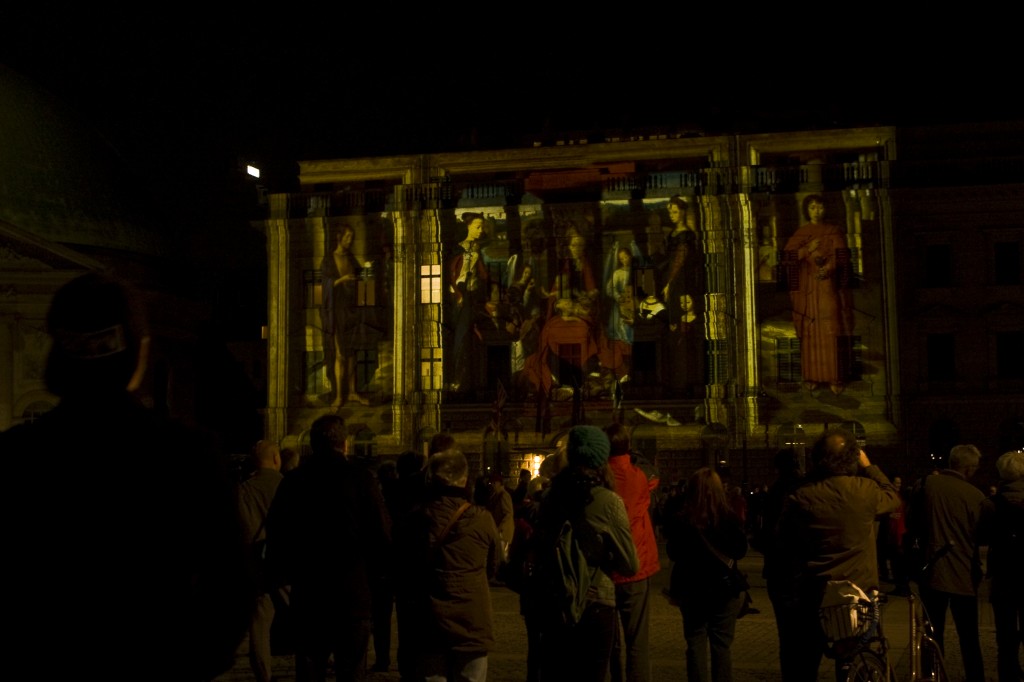
“Light is life, light is energy, light speaks all languages and light connects people.” –Birgit Zander
Berlin is a city made up of many wonders. By day, Berliners, travelers, and students explore the city streets with its numerous cozy cafes, fascinating shops, and beautiful parks. By night, the city is brought to life by chattering restaurants, rambunctious bars, and infectious clubs. Street lights and cars passing by illuminate the night air as pedestrians and bicyclists stroll along the sidewalks, wait for the green Amplemann, and swing inside warm doors. The strings of lights interlocked between the city’s trees and the glows from the restaurant and bar windows add warmth to the chilly, autumn air, while bike lights blink red across the pavement. Berlin is a city of light.
I’d never heard about Berlin’s annual Festival of Lights until after I moved here, despite the fact that it is one of the biggest illumination festivals across the world. The concept fascinated me; the rich history of Berlin is built into its greatest monuments, from Brandenburg Tor, the Berlin Cathedral, Tempelhof Airport, the Berlin Victory Column, and all of it is illuminated throughout the city. The entire city, a city that already has a quality of magic to it, is staged as a work of art. With the participation of national and international artists, as well as national and international viewers, the Festival moves beyond just Berlin and becomes the production of something magnificent that is appreciated world-wide; last year alone there were about 2,000,000 visitors to the Festival.
While the lights, the glow in the dark Segway tours, and the people watching were all more than I could have hoped for, what caught my attention the most at the very beginning was the whole idea behind the making of the Festival. Before I went, I took some time to research more about the history of the Festival. I’d figured it would have been a large, city-wide initiative with half of its purpose being for the sake of art and the other half having an advertisement or promotional agenda. While my research didn’t entirely prove me wrong about being an advertisement, the concept of bringing the world together in Germany’s capital through a massive display of lights fascinated me. The world today has less distinct boundaries than ever before; media, economies, and politics have all sewn together the lives of citizens across countries. The Festival of Lights hopes to embody and facilitate the idea of togetherness throughout the world through the medium of light art. As not only an art event, the Festival has evolved into a cultural event as well with music shows, show cases, and large tours and with the help of communications and advertisements through the Internet, the appeal of the festival to tourists and other international travelers has increased since its start in October of 2005.
The 71 projections throughout the city have all been created by the original vision of one woman, Birgit Zander and her event company, Zander & Partner. Beginning in 2005, and annually running for two weeks each October, the whole organization of the Festival is led by Zander. “Light is life, light is energy, light speaks all languages and light connects people,” she says. The concept of creating something universal, something that the entire world can come together and appreciate is realized by Zander and the work she puts in each year to make possible the numerous light shows, laser projections and video mappings that turn two weeks of chilly autumn nights into something extravagant.
While a major benefit of the Festival of Lights is the increased tourism throughout the city, the real appreciation spectators have for this vision is the magic that it brings to Berlin. The lights transform monuments Berliners and tourists pass by daily into something entirely new. Museums and monuments full of history and art are turned into blank canvases. For me there was something extremely special about looking upon the Berliner Dom and thinking about the Protestant history that it holds while getting to see it again for the first time. The lights turned the Cathedral into a whole new work of art on its own, completely separate from the history and architecture that it embodies. It was beautiful, and magical, and new. I was looking at a building I had seen many times and learned about as an entirely new building, while the city was transformed into a vibrant, starry night.
Over a hundred people milled around the Berliner Dom, looking at the lights and chatting with friends or taking photographs from their tripods. The series of light designs went from musical notes, to psychedelic patterns, to a blue print covered in various white flowers and many others. The streams of light being projected from a large tent were filled with a thin mist, like dust particles floating in the path of a flashlight. Suddenly, as a friend of mine and I were sitting on top of my jacket spread out over the moist lawn, it started to pour down rain through the warm, autumn night air. At this time I wasn’t thinking about the communications and marketing benefits of holding the Festival of Lights, I was thinking about the magic it creates throughout the city. I was thinking about the beauty of the projections through the falling rain and how the silhouettes of visitors with their black umbrellas against the illumination of the fountain reminded me of Elliot Erwitt’s photography. The whole experience made me feel as though just a little light could transform anything.
When Birgit Zander says “Light is life” she truly sums up the Festival of Lights: the light shows bring life to the night, the buildings, the streets, and the people. The lights drive out the darkness and the cold of the coming winter and fill them instead with brightness and warmth. So while the city benefits in many ways from the tourism and promotional values of the Festival, to the artists and the people that come from all over to see it, the lights mean much more than that. As Victor Hugo once said, “To love beauty is to see light.”
Photo gallery:

